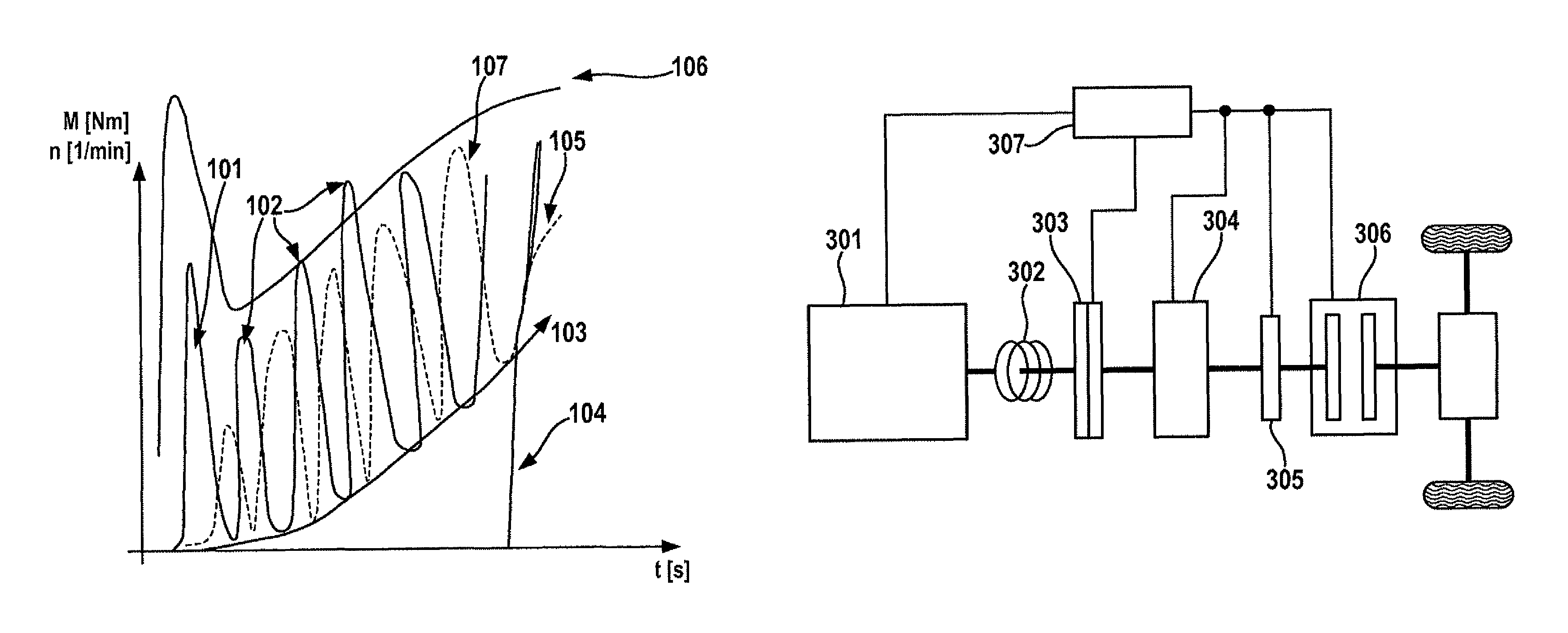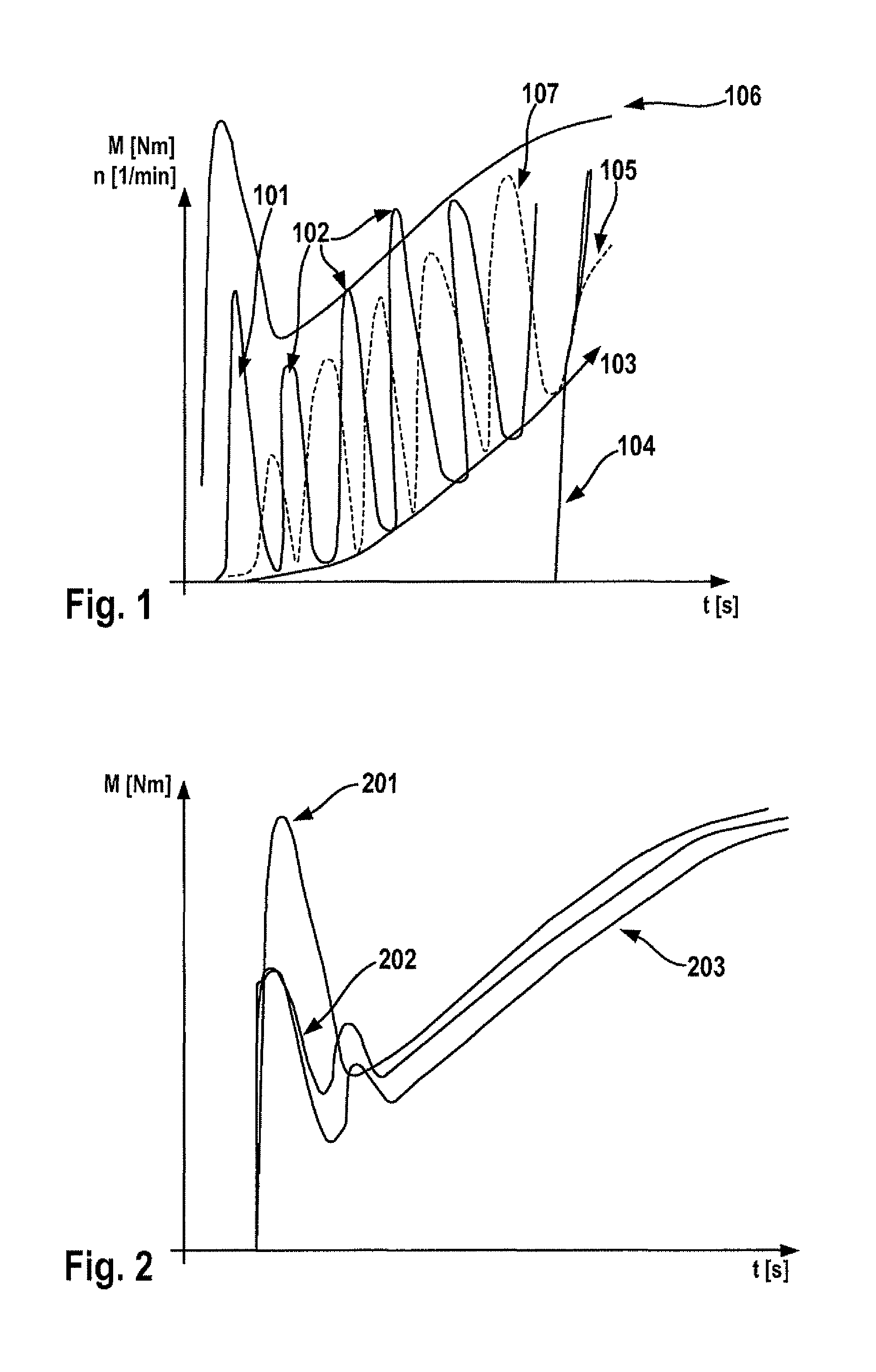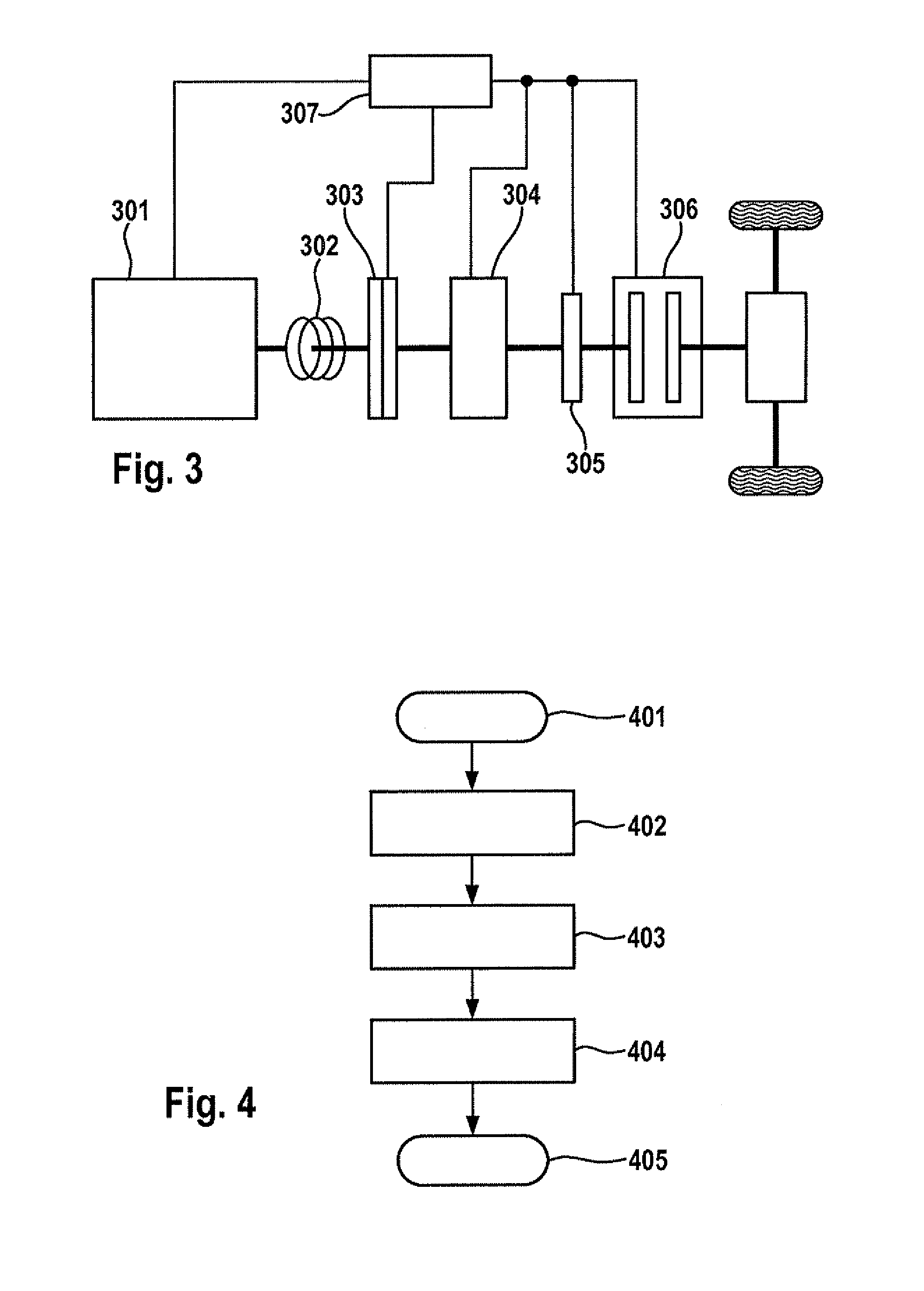Method and device for determining and predicting a starting torque or a starting torque characteristic curve required for starting an internal combustion engine
a technology of starting torque and characteristic curve, which is applied in the direction of engine-driven generators, machines/engines, process and machine control, etc., can solve the problems of frequent starting and stopping procedures of internal combustion engines, impairing electrical driving operation, and no longer possible to drive purely electrically, so as to reduce internal combustion engine speed gradient, reliable and comfortable, reliable
- Summary
- Abstract
- Description
- Claims
- Application Information
AI Technical Summary
Benefits of technology
Problems solved by technology
Method used
Image
Examples
Embodiment Construction
[0066]In FIG. 1, for example, the determined starting torque characteristic curve that is to be ascertained and the speed over time of a tow-started internal combustion engine is shown. At 101, a large “breakaway torque” may be seen, which is composed especially of the torque for overcoming the static friction and / or the compression torque / expansion torque. Three cylinder charge-dependent compression torques / expansion torques are shown by 102. The torque requirement for overcoming the dynamic friction is shown by 103. All dynamic components include especially acceleration torques of the internal combustion engine, which are ascertainable especially with the aid of the difference of the current motor speed and the current internal combustion engine speed, the difference of the internal combustion engine start targeting speed and the current internal combustion engine speed and / or the angular acceleration. Dashed line 107 shows the speed curve of the internal combustion engine. At 104...
PUM
 Login to View More
Login to View More Abstract
Description
Claims
Application Information
 Login to View More
Login to View More - R&D
- Intellectual Property
- Life Sciences
- Materials
- Tech Scout
- Unparalleled Data Quality
- Higher Quality Content
- 60% Fewer Hallucinations
Browse by: Latest US Patents, China's latest patents, Technical Efficacy Thesaurus, Application Domain, Technology Topic, Popular Technical Reports.
© 2025 PatSnap. All rights reserved.Legal|Privacy policy|Modern Slavery Act Transparency Statement|Sitemap|About US| Contact US: help@patsnap.com



